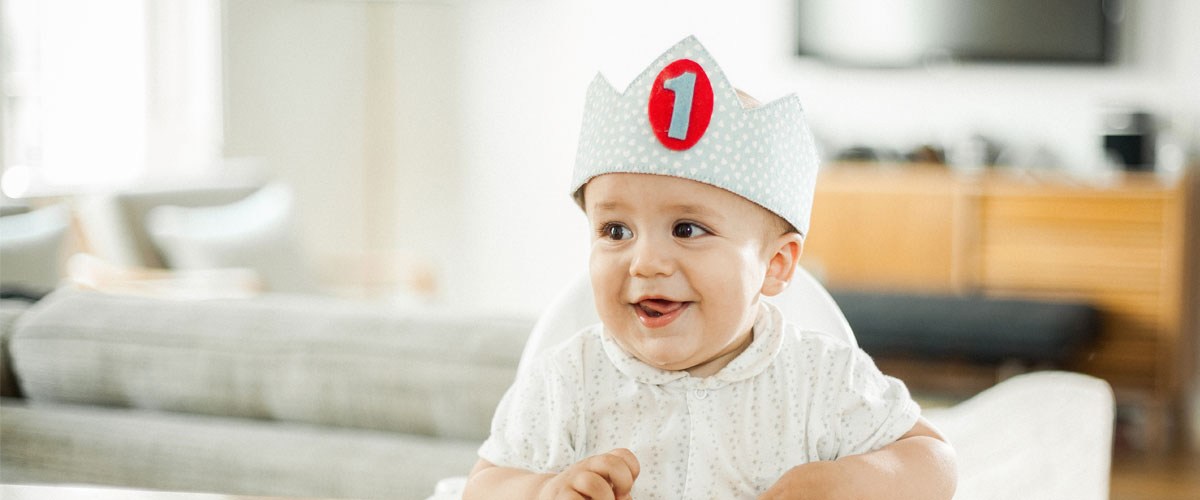
|

|
Happy birthday to your baby!
As your baby turns one, we wanted to just take a moment to give you a pat on the back. You’ve changed countless diapers and lost so much sleep in the past year. You’ve most likely had more gooey kisses and toothless smiles than you can count. It’s probably been the longest year of your life, and also gone by in the blink of an eye. Your life has changed so much. Being a parent is such a hard and important job. KFL&A Public Health salutes you!
This month, we’ll be talking about immunizations, checking in about what your baby is eating, and giving some information about car seats. But first, lets complete the Looksee Checklist!
It’s time to complete the Looksee Checklist for 12-month old’s!
By twelve months of age, does your baby:
- Look at the person saying the baby’s name?
- Understand simple requests and questions? (“where is the ball?”, “find your shoes”)
- Combine sounds together as though talking? (“bada banuh abee”)
- Take turns making sounds with you?
- Consistently use three or more words? (words do not have to be clear)
- Hold, bite and chew crackers?
- Get up into sitting position from lying down without help?
- Crawl or “bum” shuffle easily?
- Pull up to stand at furniture?
- Pick up small things using tips of thumb and first finger?
- Take things out of containers? (blocks)
- Show many emotions such as affection, anger, joy or fear?
- Start games with you or show you toys? (peek-a-boo, pat-a-cake)
- Seek comfort? (reach up to be held when upset)
- Use facial expressions, actions, sounds or words to make needs known or to protest?
Follow up with your health care provider if you answered “no” to any of these questions or if you have concerns about your child’s development. |
Immunization alert!
Your child is due for their first immunization for measles, mumps, rubella, as well as the meningococcal and pneumococcal immunizations. Your child will receive three injections in total.
Young babies receive immunizations in their thigh. Now that your baby is 12 months old, they may start receiving their immunizations in their arm. Some babies are walking now, and we don’t want to slow them down by giving them an immunization in the leg!
Will your child be going to daycare soon? Here are some tips on how to report their immunizations to Public Health. |
Feeding your baby at one year
- Your child should now be eating the same foods (and same textures) as the rest of the family. You can still break up the food to make it easier for them to eat, and to prevent choking.
- Offer a variety of foods from Canada’s Food Guide. Feeding tips and a sample menu.
- If your baby drinks from a bottle, switch to an open cup by about 12 months and no later than 18 months of age.
- Children grow at different rates and come in different shapes and sizes. If you’re worried about your child, talk to your health care provider.
- If your baby is getting any amount of breastmilk (human milk), continue to give them a vitamin D supplement of 10 µg (400 IU) each day, until your baby is 2 years old.
- Other supplements such as vitamins and minerals are not usually needed. Check with a Registered Dietitian or your health care provider if you are unsure.
|

|
Car seats
Did you know that Ontario’s Highway Traffic Act requires children to use a rear-facing car seat until they weigh at least 9 kg (20 lb)?
In fact, the longer your child remains rear-facing, the safer they will be! It’s okay if your child’s legs touch the back of the seat.
Each car seat is different, so check your manual to learn about its height and weight restrictions. Some car seats can stay rear-facing up to 45 lbs, which means some children can stay rear-facing until they are 3 or 4 years of age! |
Serve and return
You play an important role in the development of your baby’s brain. You are your baby’s most important connection to the world.
”Serve and return” interactions shape your baby’s brain development. This means when babies “serve” (by babbling, crying or gesturing), the adult “returns” the interaction by responding back. Learn how this works and watch a video about serve and return. |
Now that your baby is older, we'll send e-mails less often. We'll talk to you again when your baby is 15 months old. Take care! |
KFL&A Public Health, 221 Portsmouth Avenue, Kingston, Ontario K7M 1V5
|
|
|
|
|